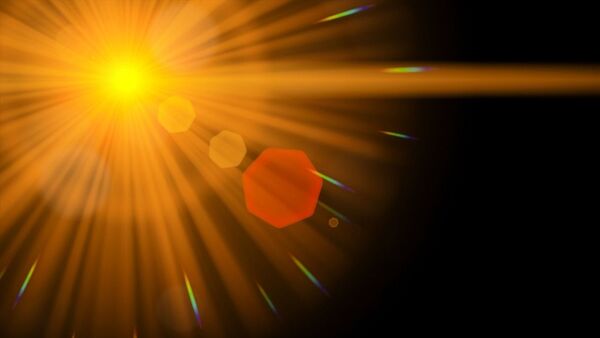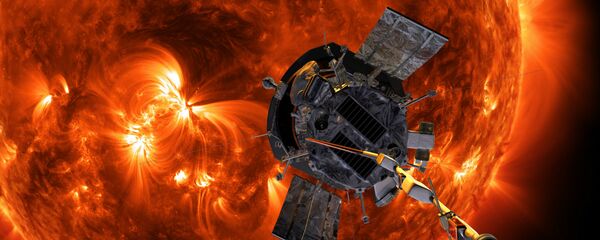The optical state studied by the research team is localised light that forms at the interface between two media playing the role of mirrors. Due to multiple re-reflections, the light turns out to be “trapped” and “blocked” at the interface. When light falls at the interface between the media, reflected and refracted rays appear.
When there is a limiting angle of total reflection, a beam can appear that glides along with the interface — a surface light wave.
“Unlike other surface waves, when a ray falls perpendicular to the surface, the wave stops and doesn’t transfer energy along with the interface. This phenomenon is called the Tamm optical state,” Stepan Vetrov, Head of the research group, professor at the Department of Theoretical Physics and Wave Phenomena of SFU, told Sputnik.
Using the cholesteric liquid crystal, the scientists have managed to spin the stopped light like a whirligig toy. This liquid crystal doesn’t have mirror symmetry, since it consists of oriented oblong molecules, the direction of which is twisted into a spiral, like a spiral staircase.
The resulting “light top” lives longer than ordinary waves. The scientists called it the chiral optical Tamm state.
“It’s very important that the new state turned out to be relatively long-living: it lasts for picoseconds. During this time, the light manages to bounce off the mirrors thousands of times. We hope that our study will help to create new types of microlasers and biosensors in the future,” Natalya Rudakova, Associate Professor of the Department of Physics at Siberian Federal University, said.
The research team also included scientists from Kirensky Institute of Physics, Federal Research Center KSC SB RAS and National Chiao Tung University (Taiwan).
The study results were published in Crystals magazine.




